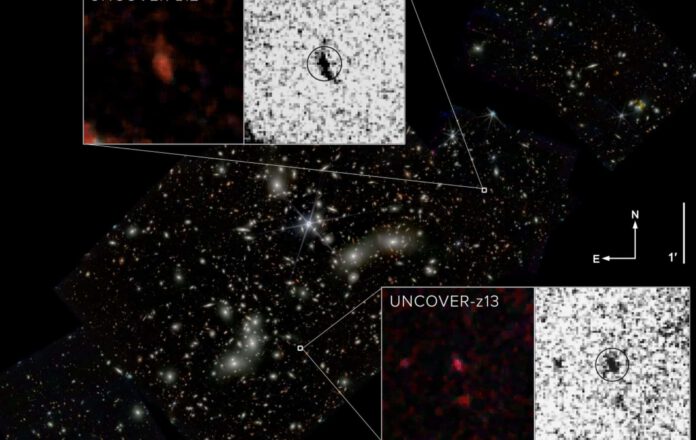
Discoveries of the Farthest and Oldest Galaxies
The powerful James Webb Telescope, positioned nearly 33 billion light-years away from Earth, has discovered some of the farthest and oldest galaxies ever known. Surprisingly, they are substantially larger than any other galaxies previously found at such extreme distances.
These discoveries were reported by researchers in The Astrophysical Journal Letters. The scientists relied on observations made by the James Webb Telescope, specifically designed to observe the first and thus the most distant galaxies in the universe. Researcher Bingjie Wang explains, “Little is known about the early universe; the only way to learn more about this era and test our theories regarding the formation of the first galaxies is to examine these far-off galaxies.”
The Journey Through Time and Space
The light from these galaxies took billions of years to reach the James Webb Telescope, thus allowing the telescope to observe them as they were 330 million years after the Big Bang, or 13.4 billion years ago. As researcher Joel Leja puts it, “The light from these galaxies is old, around three times older than Earth.”
One might expect these galaxies to be approximately 13.4 billion light-years away from us (a light-year being the distance light travels in a year), but this is not the case. Due to the expansion of the universe, they are actually around 33 billion light-years away, explain the researchers.
Giant Galaxies
Beyond the mere excitement of observing such distant galaxies, these two stand out due to their significant size. One is believed to be at least six times larger than any galaxies previously found at similar distances from Earth. Despite being much smaller than our Milky Way – measuring approximately 2,000 light-years in width compared to the Milky Way’s 100,000 light-years – it is notably large for its time of formation. This finding contradicts the common assumption that the young universe was more condensed, hence preventing the formation of large galaxies.
Diverse Discoveries
Considerably larger than their counterparts, these two galaxies display unique characteristics. Unlike the three similarly distant galaxies discovered earlier – which appear as mere red dots in James Webb’s images – the latest finds are strikingly different. The second-farthest galaxy ever discovered (also known as UNCOVER Z-13) appears like a fluffy ball in the images, while the fourth-farthest (UNCOVER Z-12) resembles a peanut in shape. Wang asserts, “The striking diversity between these galaxies, all formed from similar materials, is surprising.”
An analysis of the light emitted by these two ancient and larger galaxies reveals them to rapidly grow, actively forming stars, and lacking heavier elements (such as metals). The absence of heavier elements aligns with expectations, as these elements are formed in the cores of stars and were first released when the first stars died. Leja explains, “These early galaxies were the first factories where these heavy elements could be created.”
The Quest Continues
As we continue to discover more distant and therefore older galaxies, the question arises whether we have truly sighted the first galaxies or if there are even older galaxies awaiting discovery. Scientists believe that with the assistance of gravitational lenses and the powerful infrared instruments on board the James Webb Telescope, it should be feasible to detect even more remote galaxies. However, the existence of such galaxies remains uncertain until they are found. As such, astronomers will ceaselessly continue their search.











